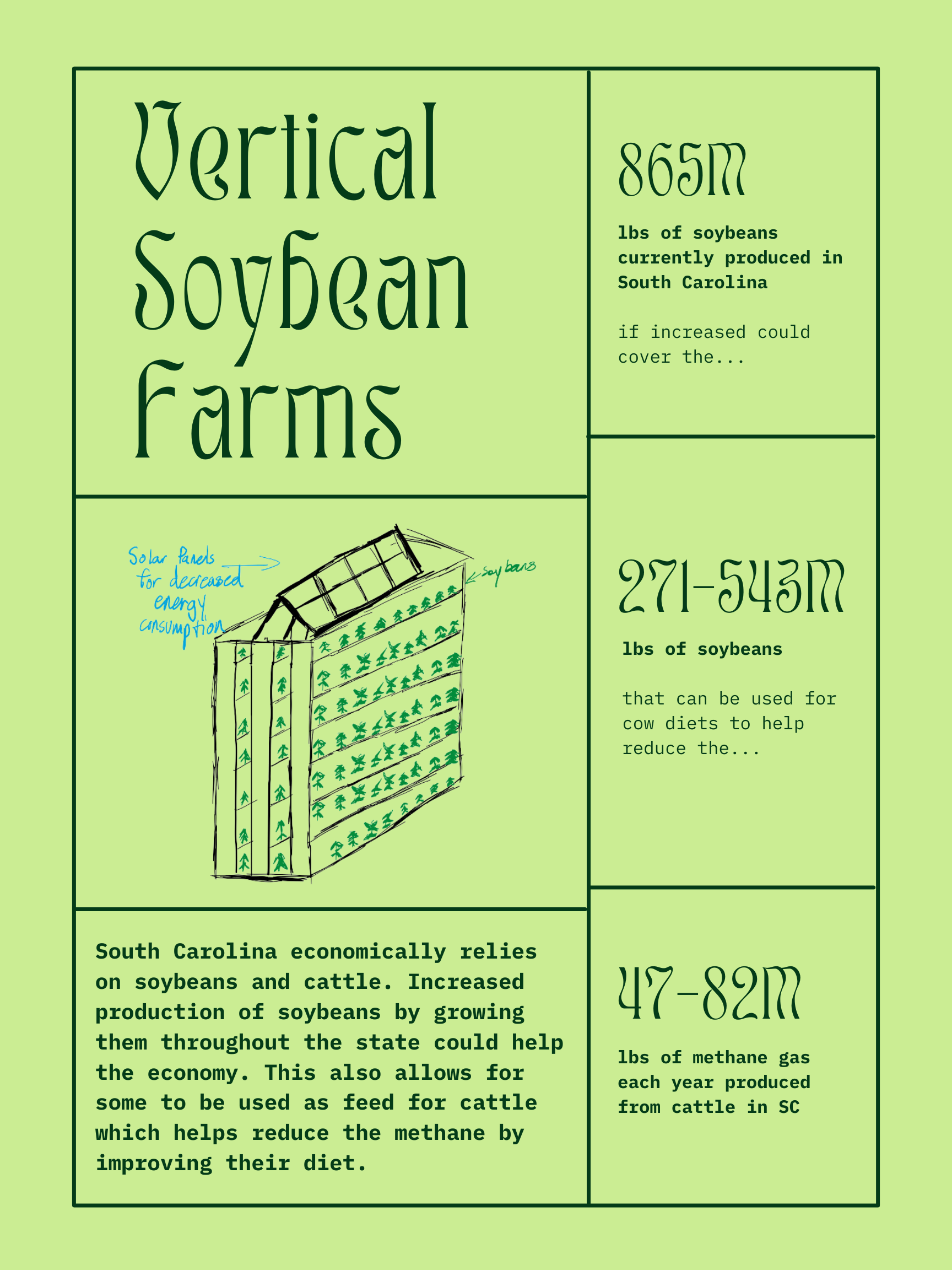South Carolina heavily depends on agriculture, with the top agricultural commodities being corn, cattle, and soybeans. The state produced 865,800,000 lbs. of soybeans in 2022. Increasing the production of soybeans could help environmentally and economically.
Due to the necessary climate control and improved land usage, vertical farming facilities could grow soybeans in more areas around the state, rather than only the midlands, which would increase production and decrease CO2 levels from transportation. These facilities could be powered through solar energy, or other forms of renewable energy, to reduce energy consumption. Though a singular vertical farming facility wouldn’t drastically change anything, several all around the state would help to supply more soybeans and reduce greenhouse gas levels.
This process could also help in other ways. For example, cattle production releases lots of methane, which accounts for 25% of warming, with about 47 to 82 million lbs. coming from South Carolina annually. To decrease the methane, their diet quality must be improved. Soybeans are already produced in SC and can comprise 10-20% of a cow’s diet. Feeding cattle would take between 271 to 543 million lbs. of soybeans, which the state produces, but with increased production, this amount could become tolerable.
Contact us
Thank you for your interest in contacting Future Engineers. We look forward to connecting with you!
General Inquiries
support@futureengineers.orgSponsorship Inquiries
sponsor@futureengineers.org
